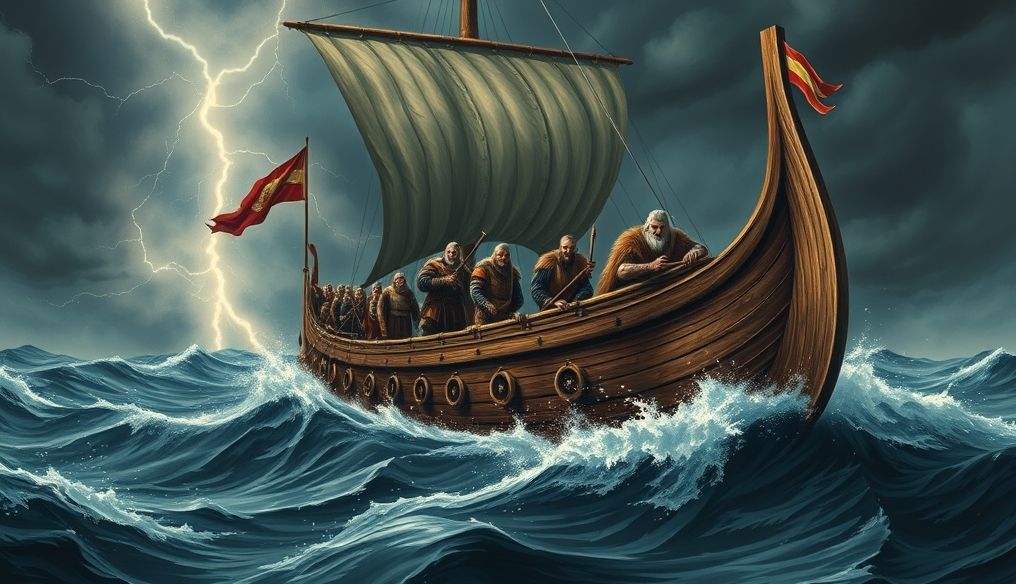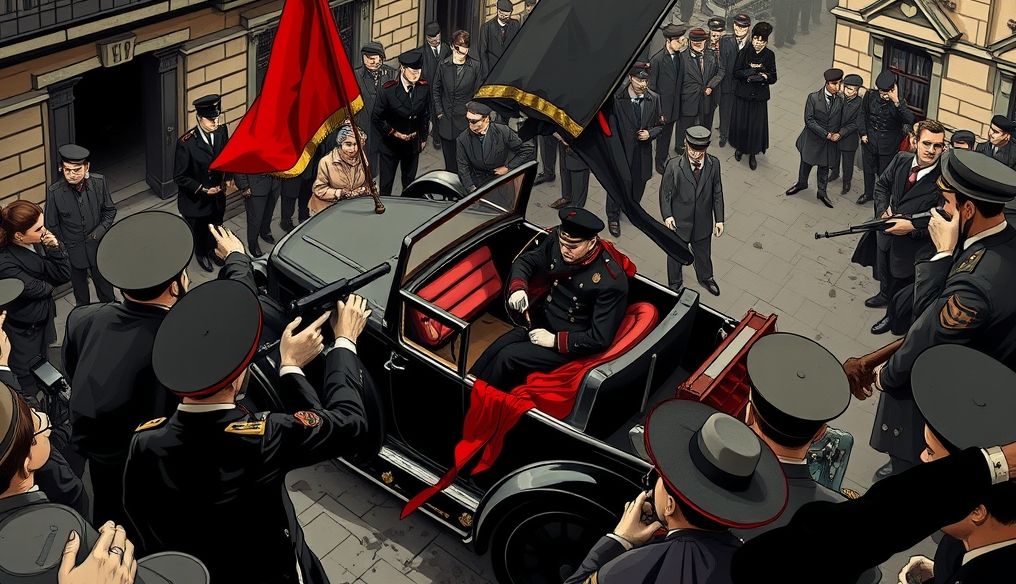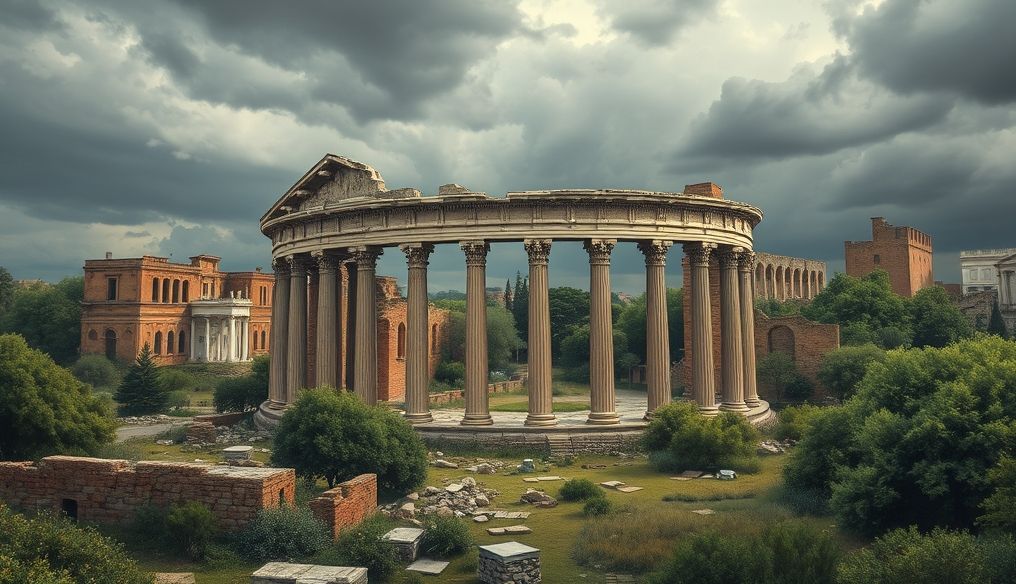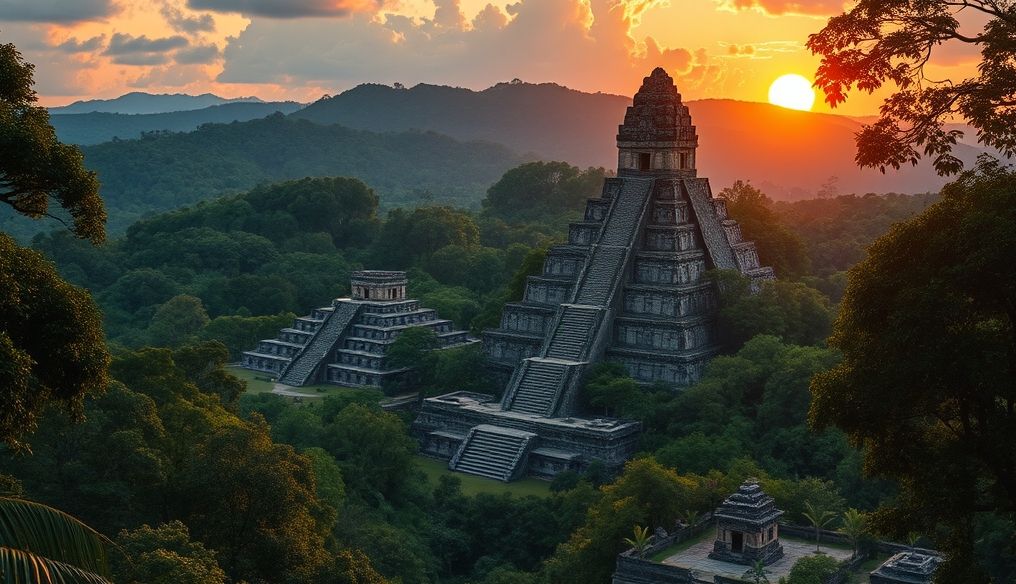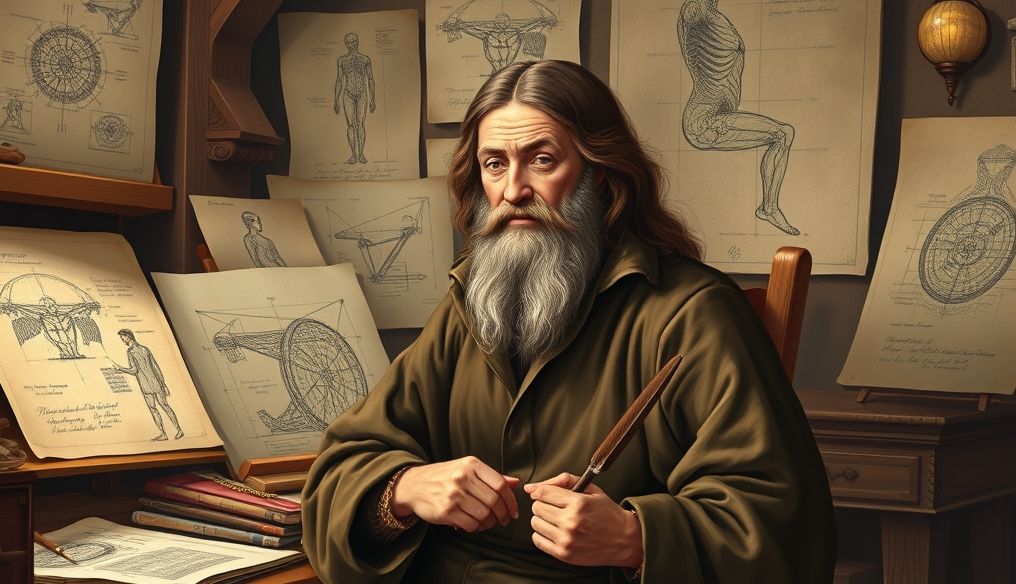Who Were the Vikings? A Look at Their Origins and History
The Vikings were not just one ethnic group, but rather North Germanic peoples who inhabited the Scandinavian countries (Norway, Sweden, Denmark) during the Viking Age, which lasted approximately from the late 8th century to the mid-11th century AD.
Geographical and Social Origins
- Geography: The rugged nature and harsh climate of the Scandinavian countries drove the population towards the sea, leading to the development of advanced maritime skills.
- Society: Viking society was hierarchical, consisting of different classes: kings, nobles (who owned land), free men (farmers and merchants), and slaves.
- Religion: The Vikings worshiped multiple gods, such as Odin (god of war and wisdom), Thor (god of thunder), and Freya (goddess of love and fertility).
Vikings: Warriors or Explorers?
Vikings are often portrayed as warriors and pirates, but they were also skilled explorers and traders.
Raids and Wars
- Motivation: The raids were driven by the need for resources, as well as the ambition for wealth and status.
- Tactics: The Vikings used their longships (drakkars) to carry out quick raids along the European coasts.
- Victims: The raids targeted monasteries and coastal cities, terrorizing the local population.
Exploration and Trade
- Settlements: The Vikings established settlements in Iceland, Greenland, and even in North America (Vinland).
- Trade: The Vikings traded furs, slaves, weapons, and other goods, reaching regions as far as the Middle East.
- Innovations: The Vikings developed advanced maritime technologies, such as using the stars to determine locations at sea.
Longships: The Key to Viking Power
Longships (drakkars) were more than just boats; they were a symbol of Viking power and their ability to control the seas.
Design and Construction
- Flexibility: Longships were lightweight and flexible, allowing them to sail in shallow waters and land on beaches easily.
- Speed: Longships were very fast, allowing the Vikings to carry out quick raids and escape quickly.
- Maneuverability: Longships were easy to maneuver, allowing the Vikings to sail in narrow waters and cope with harsh weather conditions.
Strategic Importance
- Transportation: Longships were used to transport warriors and goods across seas and rivers.
- Warfare: Longships were used in raids and naval battles.
- Exploration: Longships were used to explore new regions and establish settlements.
Viking Mythology: The World of Gods and Heroes
Viking mythology is full of powerful gods, brave heroes, and mythical creatures.
Main Gods
- Odin: God of war and wisdom, and ruler of the Aesir gods.
- Thor: God of thunder, and protector of mankind.
- Freya: Goddess of love, fertility, and beauty.
- Loki: God of mischief and trickery, and a controversial figure in Viking mythology.
Legendary Heroes
- Ragnar Lothbrok: A legendary Viking warrior, known for his daring raids and exciting adventures.
- Beowulf: An ancient English hero, known for his fight against monsters.
Mythical Creatures
- Dragons: Huge fire-breathing creatures, guarding treasures.
- Giants: Huge and powerful creatures, often enemies of the gods.
- Dwarves: Short creatures skilled in crafting weapons and jewelry.
Daily Life of the Vikings: Beyond the Stereotype
The daily life of the Vikings was more complex than the stereotype of barbaric warriors suggests.
Agriculture and Animal Husbandry
- Crops: The Vikings grew barley, wheat, and oats.
- Animals: The Vikings raised cows, sheep, and pigs.
- Hunting: The Vikings hunted for meat and fur.
Crafts and Skills
- Shipbuilding: The Vikings were skilled in shipbuilding, and built the famous longships.
- Blacksmithing: The Vikings were skilled in blacksmithing, and made weapons and tools.
- Weaving: Viking women wove clothes and fabrics.
Customs and Traditions
- Assemblies: Assemblies (Things) were places for meeting and making decisions.
- Celebrations: The Vikings celebrated a variety of religious and social celebrations.
- Funerals: The Vikings buried their dead with their belongings, and sometimes with an entire ship.
The End of the Viking Age: Causes and Effects
The Viking Age gradually ended, due to a combination of internal and external factors.
Conversion to Christianity
- Influence: Christianity spread in the Scandinavian countries, leading to the decline of the old pagan religion.
- Adoption: Viking kings embraced Christianity, leading to the transformation of their societies.
Political Unification
- Kingdoms: Small kingdoms in the Scandinavian countries unified to form larger and more stable states.
- Central Authority: The central authority of the kings increased, reducing the power of local nobles.
Impact on Europe
- Trade: The Vikings contributed to the development of trade in Europe.
- Language: The Old Norse language left its mark on other European languages.
- Culture: Viking culture influenced European art and literature.
Vikings in Modern Popular Culture
The Vikings continue to capture our imagination in modern popular culture, from movies and TV series to video games and novels.
Cinematic and Television Representations
- Vikings (TV Series): A popular TV series that showcases the life of Ragnar Lothbrok and his family.
- The Northman (Film): A historical action film inspired by the legend of a Danish prince seeking revenge for the murder of his father.
Video Games
- Assassin's Creed Valhalla: A video game that allows players to explore the Viking world and engage in raids and battles.
Cultural Impact
- Fashion: Designers have drawn inspiration from Viking fashion in their designs.
- Music: Musicians have drawn inspiration from Viking music in their works.
- Literature: Writers have drawn inspiration from Viking mythology in their novels.
What Have We Learned from the Vikings? Lessons from the Past
Despite their reputation as warriors, we can learn a lot from the Vikings about courage, innovation, and adaptation.
Courage and Perseverance
- Challenges: The Vikings faced significant challenges, such as a harsh climate and constant wars.
- Overcoming: The Vikings overcame these challenges through courage and perseverance.
Innovation and Creativity
- Ships: The Vikings developed longships, which were among the most advanced ships of their time.
- Skills: The Vikings were skilled in a variety of crafts and skills.
Adaptation and Resilience
- Changes: The Vikings adapted to changes in their environment and societies.
- Success: Their ability to adapt allowed them to succeed in a variety of circumstances.
Conclusion: The Vikings were more than just warriors. They were explorers, traders, artists, and builders of civilization. By understanding their history and culture, we can learn a lot about ourselves and the world around us.
